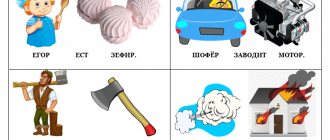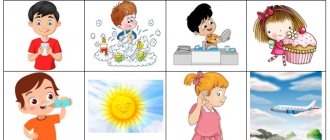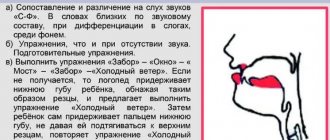BASIC CONCEPTS OF AUTOMATION OF TECHNOLOGICAL PROCESSES. - presentation
BASIC CONCEPTS OF AUTOMATION OF TECHNOLOGICAL PROCESSES
Basic levels of production automation Depending on the volume of tasks to be solved, production automation is divided into three levels: partial, complex and complete production automation. Partial automation involves the automation of individual production processes, devices, and equipment elements. Complex automation is carried out at a site, in a department, in a workshop, which function as a single interconnected automated complex, i.e. with the participation of people. Full automation is the highest level of automation, which involves the transfer of all production management and control functions to automatic control systems. 1
Main types of automation 1. Automatic control 2. Automatic protection 3. Remote and automatic control 4. Telemechanical control Includes: - Automatic alarm; — Automatic measurement; — Automatic sorting and collection of information It is a set of technical means that, when abnormal or emergency conditions occur, either stop the controlled process or automatically eliminate abnormal conditions. Combines methods and technical means of controlling installations and various objects at a distance. Allows you to combine into one TP the work of a large number of machines and installations located at a considerable distance from one another. 2
Automatic control - Automatic alarm is designed to notify operating personnel about limiting or emergency values of any physical parameters of the technological process (Lamps, bells, sirens, special signs and other light and sound devices are used as signaling devices); — Automatic measurement is used to measure and transmit to special indicating or recording devices the values of physical quantities characterizing technological processes or the operation of machines. — Automatic sorting is designed to control and separate products by size, weight, hardness, viscosity and other indicators; — Automatic collection of information is used to obtain information and for further processing, storage and delivery of information to service personnel. 3
Automatic protection It includes automatic blocking devices, a control object and automatic regulators. Automatic blocking devices are designed to prevent incorrect switching on and off and erroneous actions of maintenance personnel; A control object or controlled object is a set of elements in which technological processes are subject to targeted influences. Automatic regulators perform the function of automatically maintaining any parameters in an object at a given level or changing them according to a certain law 4
Methods of measurement during automation Comparison of measured quantities with units is carried out in various ways: direct, indirect and cumulative. — Direct measurements are carried out directly by the reading device of the measuring device. For example, measuring pressure with a spring pressure gauge, mass on a dial scale. — Indirect measurements are those in which the value of the measured quantity is determined from the results of direct measurements of one or several quantities related to the desired quantity by a certain dependence - a formula. — Cumulative measurements are those in which the numerical values of the measured quantity are determined by solving a series of equations obtained as a result of direct measurements of one or more homogeneous quantities. For example, determining the temperature coefficient 5
Automation control and measuring instruments Control and measuring instruments are classified: by the type of quantity being measured, methods of obtaining information, metrological purpose, location. Depending on the type of quantity being measured, devices for measuring temperature, pressure, quantity and flow, level, composition, and state of matter are distinguished. According to the method of obtaining information, devices are divided into indicating, recording, signaling, comparing, and regulating. According to their metrological purpose, devices are divided into working, exemplary and reference. Based on location, local and remote devices are distinguished. 6
Unification of input and output signals of devices DC signal 0…5; 5…0…5; 0…20 mA 7 DC voltage signal 0…1; 1…0…1; 0…10; 10…0…10 V AC voltage signal with a frequency of 50 and 400 Hz 0…0.25; 0…0.5; 0…1; 0…2 V Pneumatic signal with pressure change limits 0.02…0.1 MPa
Classification and types of measuring transducers and devices By type of controlled parameter (pressure, temperature, speed, etc.) 8 By the physical nature of the signal being converted (medium temperature into an electrical impulse, mechanical action, etc.) AC voltage signal with frequency 50 and 400 Hz 0…0.25; 0…0.5; 0…1; 0…2 V Pneumatic signal with pressure change limits 0.02…0.1 MPa Main types of automatic regulator measuring device
Unification of device signals DC signal 0…5; 5…0…5; 0…20 mA 9 DC voltage signal 0…1; 1…0…1; 0…10; 10…0…10 V AC voltage signal with a frequency of 50 and 400 Hz 0…0.25; 0…0.5; 0…1; 0…2 V Pneumatic signal with pressure change limits 0.02…0.1 MPa
Classification of automatic control systems According to the nature of the use of information Open-loop systems With a rigid program With control by disturbance Closed-loop systems Use current information about output quantities, determine the deviation of the controlled quantity from its specified value and take actions to reduce or completely eliminate it Control is carried out on the basis of information about input ( disturbing ) influences 10
Classification of automatic control systems By control method Unsuitable - merging Stabilizing Software Adaptable curly servo 11
By change in impact over time Intermittent (discrete) Relay Pulse Continuous Digital Classification of automatic control systems 12
Classification of automatic control systems Based on the results of operation in a steady state Static Astatic 13
Classification of automatic control systems According to the number of controlled quantities One-dimensional Multidimensional 14
Classification of automatic control systems By type of differential equation Linear Nonlinear 15
Thank you for your attention !!!
LiveInternetLiveInternet
Publisher: Gnome and D
Year of publication: 2005
Russian language
Age: 5-7 years
This manual is addressed to speech therapists, teachers of speech therapy groups, and parents. Its main task is to help the child learn the correct pronunciation of the sounds P, Pь, B, B.
The manual offers practical material on production, automation and differentiation of these sounds. The manual contains a variety of lexical material, descriptions of games and individual exercises.
Examples from the book by Egorov O.V. “Sounds P, Pь, B, B. Speech material and games on automation and differentiation of sounds for children 5-7 years old"
Practical material on audio automation B
- Repeat the syllables.
Ba - ba - ba Ba - bo - bu - would
Boo-bu-bu Bo-ba-bu-would
Would - would - would Boo - bo - would - ba
Bo - bo - bo Would - boo - bo - ba
- Repeat the words.
Sound at the beginning of a word:
Buck, ball, button accordion, bathhouse, bow, base, banana, loaf, bank, bashdya, luggage, ballet, balyk, balance, hook, ram, bazaar, badger; side, bob, boots, pain, boots, boron, Borya, beard; riot, beads, storm, bouquet, paper, letter, booth, bun, mound, alarm clock; bull, life, was, byle, epic, bull.
Sound in the middle of the word: Lyuba, fur coat, toad, fish, boar, dog, estate, wedding, shirt, plane, request; lips, teeth; trunk, album, sable, bus, care, fence, work; ABC.
Confluence of consonant sounds in syllables and words:
Bvo, bwi, bni, bdu, bde, bgo; blah, blah, blah, blah, blah; bra, bra, bro, bra, bri.
Circle, encircle, embrace, embrace, consider, deprive, overtake; blank, roach, bliss; block, blockade, notepad, blond, cover; get lost, wander; glare, pancakes, dish, saucer; bra, brother, bravo, back, breaststroke, zebra, brother; break, kick; ford, armor, eyebrows, brooch; rattle, razor, apricot.
- Repeat the sentences.
Lyuba has a beautiful fur coat. Lyuba has a big bow. An elephant has a long trunk. Bori's teeth hurt. Lyuba eats bananas. My brother has a notebook. Brother shaves with a razor. Katya was very happy with the brooch. The pancakes were on a plate. There was a brooch hanging from her blouse. Lyuba is wearing beads. Bori has a bun. Borya eats baked goods. Grandma cooked mushrooms. There's a wild boar behind the fence. The dog barks at the toad. Lyuba is learning the alphabet. Borya saw a zebra. Next to the bull is a bull. Borya circles the pictures. A tower is drawn in the album. Bori has a beard.
- Repeat the phrases.
- Repeat proverbs and sayings.
- Repeat the tongue twisters.
- Repeat the riddles.
Download Egorova O.V. “Sounds P, Pь, B, B. Speech material and games for automation and differentiation of sounds in children 5-7 years old” Egorova O.V. “Sounds P, Pь, B, B. Speech material and games on automation and differentiation of sounds for children 5-7 years old"








